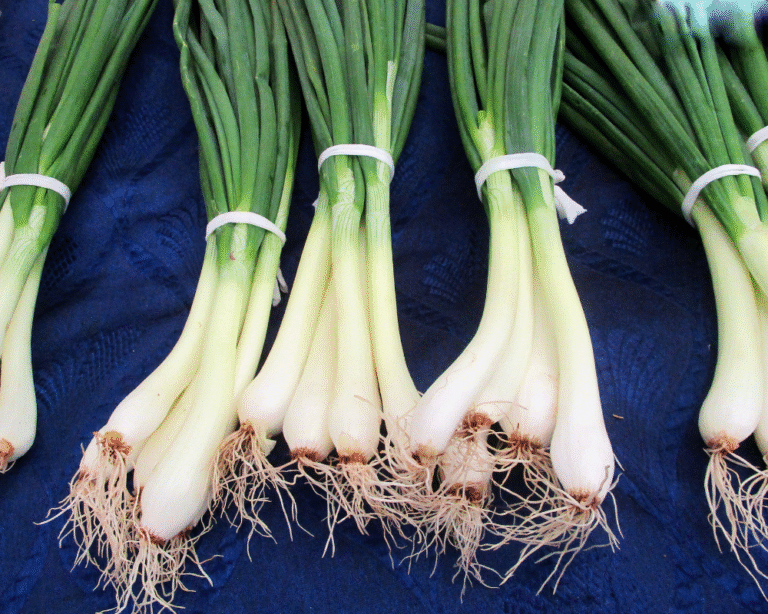#Regrowing #Scallions #AKA #Green #Onions
Last Updated on March 27, 2025 by April

Regrowing scallions, also known as green onions, at home is a fantastic way to maintain a continuous supply of these versatile greens. When you purchase scallions from the store, don’t toss those root ends! With minimal effort, you can transform kitchen scraps into a renewable ingredient source.
The benefits of regrowing scallions extend beyond just having fresh ingredients on hand. You’ll save money by not needing to buy new bunches regularly. The convenience factor is significant too—imagine having fresh scallions ready whenever a recipe calls for them!
How to Regrow Scallions in Water
- Prep the scraps: Cut off the ends, keeping about 1-2 inches with the roots attached
- Set up your container: Place the root ends in a small jar or cup
- Add water: Fill with enough water to cover the roots while keeping the tops dry
- Position for growth: Set on a windowsill that receives good light
- Maintain: Change the water at least once weekly to prevent sliminess
Within days, you’ll notice new green shoots emerging from the tops. The regrowth happens surprisingly quickly, and you’ll soon have usable scallions again.
Moving to Soil for Longer Life
Water-only growing works well initially, but for sustained growth, transplanting to soil is best. After your scallions reach 4-5 inches in height, consider planting them in:
- Garden beds with well-draining soil
- Pots filled with quality potting mix
- Window boxes or other containers
Soil-planted scallions become more robust and productive than those kept continuously in water. The plants will eventually weaken in water-only environments as they deplete their stored nutrients.
Harvesting Your Scallions
When harvesting, cut what you need by snipping the greens all the way down to soil level. The plants will regrow from this point, providing multiple harvests from a single planting. If you don’t cut them completely down, they may grow larger than typical store-bought scallions.
In milder climates, outdoor-planted scallions can survive winter and begin producing again in spring. These hardy plants might even produce delicate flowers, which are edible and make attractive, flavorful additions to salads.


